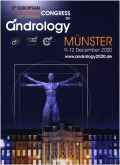- 钛学术文献服务平台 \
- 学术期刊 \
- 医药卫生期刊 \
- 外科学期刊 \
- 亚洲男性学杂志(英文版)期刊 \
null
Identification and characterization of the BGR-like gene with a potential role in human testicular development/spermatogenesis
基本信息来源于合作网站,原文需代理用户跳转至来源网站获取
摘要:
Aim: To investigate the roles of the BGR-like gene in testicular development/spermatogenesis. Methods: A human testis eDNA microarray was hybridized with probes from human adult testes and embryo testes. The differentially expressed clones were sequenced and analyzed. Expression of the BGR-like gene was analyzed by reverse transcription-polymerase chain reaction (RT-PCR). Results: A new gene exhibiting 50-fold difference in expression level between adult and fetal human testes was cloned and named the BGR-like gene. The cDNA consisted of 2500nucleotides and had an open reading frame of 1437 nucleotides encoding a putative protein of 497 amino acid residues.Homologous comparison showed that the BGR-like gene was a new alternative splicing variant of the BGR gene and had sequence homology with the bubblegum gene of human, mouse, rat and Drosophilia. Protein motif analysis of the BGR-like gene revealed that it contained a conserved adenosine monophosphate (AMP)-binding domain and a fatty acyl-CoA synthetase signature motif which existed in all acyl-CoA synthetases. The BGR-like gene transcript was imperceptibly expressed in human fetal testes, highly in human adult testes and moderately in elderly testes and human Leydig cells. RT-PCR-based tissue distribution experiments showed that the BGR-like gene was exclusively expressed in testes and was a testes-specific isoform of the BGR gene. A BGR-like gene transcript was not detected in some azoospermic testes. Conclusion: The BGR-like gene may play an important role in spermatogenesis/testicular development and may be correlated with male infertility.

推荐文章
期刊_丙丁烷TDLAS测量系统的吸收峰自动检测
带间级联激光器
调谐半导体激光吸收光谱
雾剂检漏 中红外吸收峰 洛伦兹光谱线型
不同盐度、温度及光照对漂浮浒苔生理生态的影响
浒苔
盐度
温度
光照
生理生态
期刊_联合空间信息的改进低秩稀疏矩阵分解的高光谱异常目标检测
高光谱图像
异常目标检测 低秩稀疏矩阵分解 稀疏矩阵 残差矩阵
内容分析
关键词云
关键词热度
相关文献总数
(/次)
(/年)
文献信息
| 篇名 | Identification and characterization of the BGR-like gene with a potential role in human testicular development/spermatogenesis | ||
| 来源期刊 | 亚洲男性学杂志(英文版) | 学科 | |
| 关键词 | |||
| 年,卷(期) | 2005,(1) | 所属期刊栏目 | |
| 研究方向 | 页码范围 | 21-32 | |
| 页数 | 12页 | 分类号 | |
| 字数 | 语种 | 英文 | |
| DOI | |||
五维指标
引文网络
引文网络
二级参考文献 (29)
共引文献 (11)
参考文献 (19)
节点文献
引证文献 (0)
同被引文献 (0)
二级引证文献 (0)
1981(1)
- 参考文献(1)
- 二级参考文献(0)
1992(1)
- 参考文献(1)
- 二级参考文献(0)
1994(1)
- 参考文献(0)
- 二级参考文献(1)
1995(1)
- 参考文献(0)
- 二级参考文献(1)
1996(3)
- 参考文献(2)
- 二级参考文献(1)
1997(1)
- 参考文献(1)
- 二级参考文献(0)
1998(4)
- 参考文献(3)
- 二级参考文献(1)
1999(4)
- 参考文献(1)
- 二级参考文献(3)
2000(8)
- 参考文献(3)
- 二级参考文献(5)
2001(4)
- 参考文献(2)
- 二级参考文献(2)
2002(8)
- 参考文献(2)
- 二级参考文献(6)
2003(4)
- 参考文献(2)
- 二级参考文献(2)
2004(1)
- 参考文献(1)
- 二级参考文献(0)
2005(1)
- 参考文献(0)
- 二级参考文献(1)
2009(1)
- 参考文献(0)
- 二级参考文献(1)
2011(2)
- 参考文献(0)
- 二级参考文献(2)
2012(1)
- 参考文献(0)
- 二级参考文献(1)
2013(1)
- 参考文献(0)
- 二级参考文献(1)
2018(1)
- 参考文献(0)
- 二级参考文献(1)
2005(1)
- 参考文献(0)
- 二级参考文献(1)
- 引证文献(0)
- 二级引证文献(0)
引文网络交叉学科
相关学者/机构
期刊影响力
亚洲男性学杂志(英文版)
主办单位:
中国科学院上海药物研究所
出版周期:
双月刊
ISSN:
1008-682X
CN:
31-1795/R
开本:
大16开
出版地:
上海市太原路294号16号楼302室
邮发代号:
4-648
创刊时间:
1999
语种:
eng
出版文献量(篇)
2771
总下载数(次)
1
总被引数(次)
9935
期刊文献
相关文献
推荐文献
- 期刊分类
- 期刊(年)
- 期刊(期)
- 期刊推荐
亚洲男性学杂志(英文版)2022
亚洲男性学杂志(英文版)2021
亚洲男性学杂志(英文版)2020
亚洲男性学杂志(英文版)2019
亚洲男性学杂志(英文版)2018
亚洲男性学杂志(英文版)2017
亚洲男性学杂志(英文版)2016
亚洲男性学杂志(英文版)2015
亚洲男性学杂志(英文版)2014
亚洲男性学杂志(英文版)2013
亚洲男性学杂志(英文版)2012
亚洲男性学杂志(英文版)2011
亚洲男性学杂志(英文版)2010
亚洲男性学杂志(英文版)2009
亚洲男性学杂志(英文版)2008
亚洲男性学杂志(英文版)2007
亚洲男性学杂志(英文版)2006
亚洲男性学杂志(英文版)2005
亚洲男性学杂志(英文版)2004
亚洲男性学杂志(英文版)2003
亚洲男性学杂志(英文版)2002
亚洲男性学杂志(英文版)2001

 免费查重
免费查重










